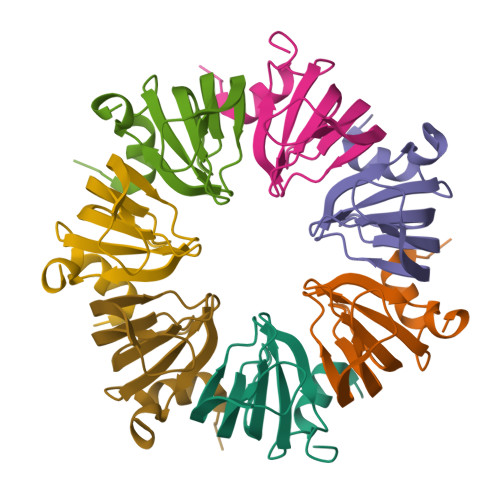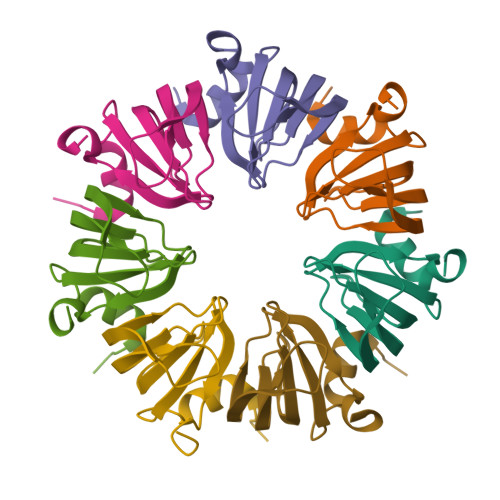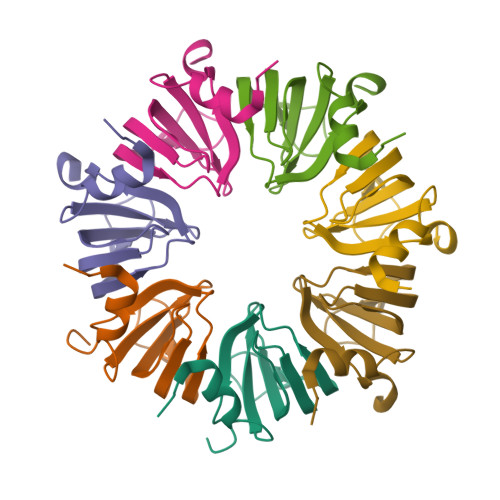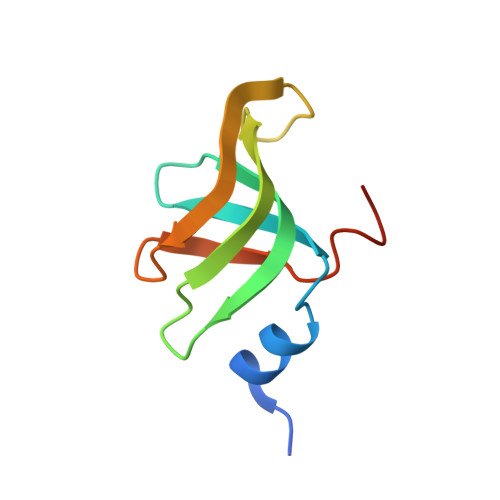Crystal structures and RNA-binding properties of Lsm proteins from archaea Sulfolobus acidocaldarius and Methanococcus vannielii: Similarity and difference of the U-binding mode.
Lekontseva, N., Mikhailina, A., Fando, M., Kravchenko, O., Balobanov, V., Tishchenko, S., Nikulin, A.(2020) Biochimie 175: 1-12
- PubMed: 32422160
- DOI: https://doi.org/10.1016/j.biochi.2020.05.001
- Primary Citation of Related Structures:
5MKI, 5MKL - PubMed Abstract:
Sm and Sm-like (Lsm) proteins are considered as an evolutionary conserved family involved in RNA metabolism in organisms from bacteria and archaea to human. Currently, the function of Sm-like archaeal proteins (SmAP) is not well understood. Here, we report the crystal structures of SmAP proteins from Sulfolobus acidocaldarius and Methanococcus vannielii and a comparative analysis of their RNA-binding sites. Our data show that these SmAPs have only a uridine-specific RNA-binding site, unlike their bacterial homolog Hfq, which has three different RNA-binding sites. Moreover, variations in the amino acid composition of the U-binding sites of the two SmAPs lead to a difference in protein affinity for oligo(U) RNA. Surface plasmon resonance data and nucleotide-binding analysis confirm the high affinity of SmAPs for uridine nucleotides and oligo(U) RNA and the reduced affinity for adenines, guanines, cytidines and corresponding oligo-RNAs. In addition, we demonstrate that MvaSmAP1 and SacSmAP2 are capable of melting an RNA hairpin and, apparently, promote its interaction with complementary RNA.
Organizational Affiliation:
Institute of Protein Research Russian Academy of Sciences, Institutskaya 4, Moscow Region, Pushchino, 142290, Russia.





















